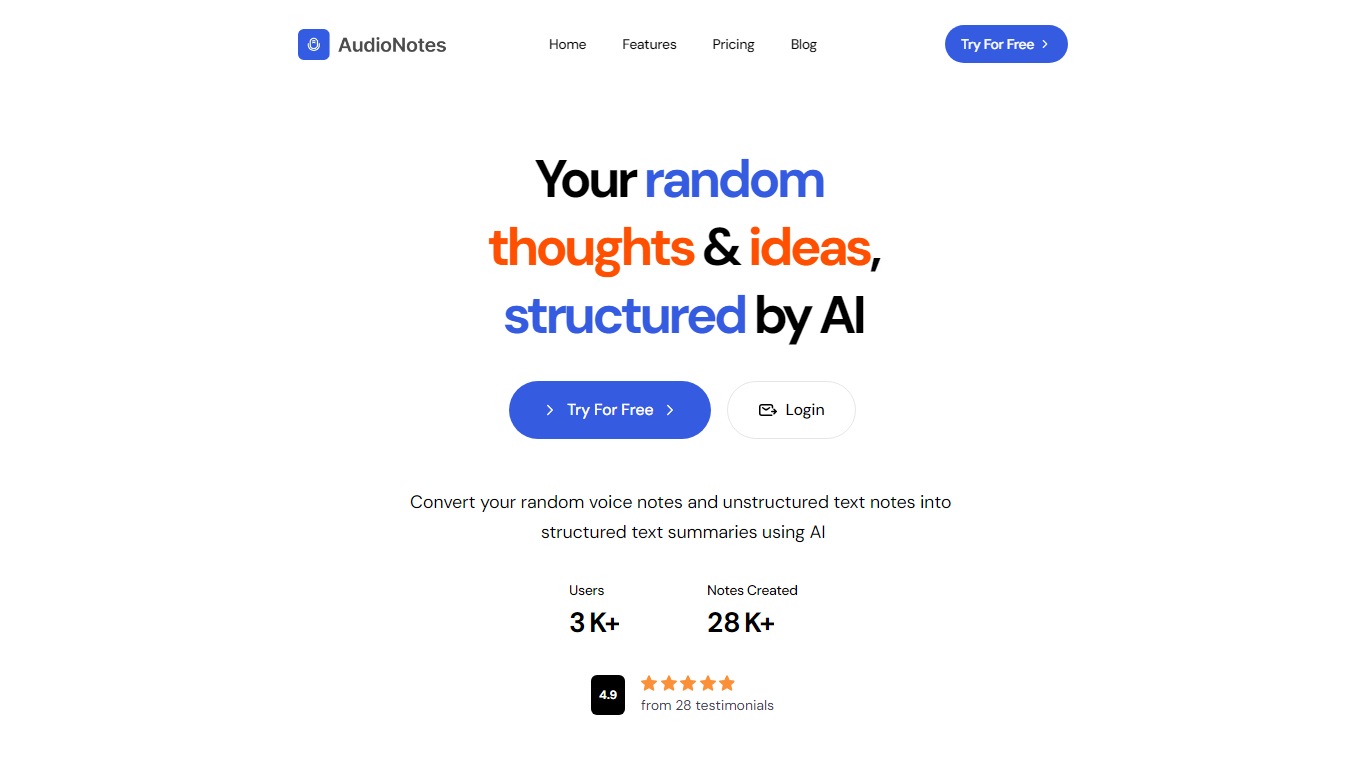AudioNotes vs Typeset
In the battle of AudioNotes vs Typeset, which AI Summarizer tool comes out on top? We compare reviews, pricing, alternatives, upvotes, features, and more.
Which one is better? AudioNotes or Typeset?
Upon comparing AudioNotes with Typeset, which are both AI-powered summarizer tools, Typeset stands out as the clear frontrunner in terms of upvotes. Typeset has received 25 upvotes from aitools.fyi users, while AudioNotes has received 6 upvotes.
Does the result make you go "hmm"? Cast your vote and turn that frown upside down!
AudioNotes

What is AudioNotes?
Unleash the power of AI with AudioNotes, the premier AI-Based Note-Taking App that excels at structuring your unstructured voice and text notes into coherent summaries. Ideal for users who frequently jot down their random thoughts and ideas, AudioNotes streamlines the note-taking process, making it more efficient and accessible. The app is host to a plethora of features, including the ability to record or upload voice notes, create text notes, and then swiftly convert these into structured summaries with AI assistance. With features like Smart Transcripts, Clean Transcripts, and Summary Preferences, AudioNotes ensures that the note-taking experience is tailored to your preferences. Moreover, AudioNotes is not just about summarization; it excels in content creation. Generate high-quality content like emails, social media posts, minutes of meetings, and more with just a single click, thanks to the app's use of custom prompts and its support for content generation in over 19 languages. The convenience extends to integrations as well, with AudioNotes boasting connections to WhatsApp, Zapier, Notion, and more—empowering you to streamline your workflows. Additionally, the Magic Chat feature acts as your AI Assistant, helping you search and interact with your notes seamlessly. Sharing is a breeze with social sharing features and publicly shareable URLs, and for the on-the-go user, a lightweight mobile app ensures access to your notes anywhere.
Typeset

What is Typeset?
Your platform to explore and explain papers. Search for 270M+ papers, understand them in simple language, and find connected papers, authors, topics.
AudioNotes Upvotes
Typeset Upvotes
AudioNotes Top Features
Voice & Text Note Conversion: Convert voice and text notes into structured summaries using AI.
Custom Content Generation: Generate emails social media content and more with custom prompts.
Effortless Integration: Connect to apps like WhatsApp Notion and Zapier for enhanced productivity.
Magic Chat Assistant: Engage with your notes using AI-powered contextual search and QnA.
Mobile Accessibility: Use the lightweight progressive web app for access on Android or iOS devices.
Typeset Top Features
No top features listedAudioNotes Category
- Summarizer
Typeset Category
- Summarizer
AudioNotes Pricing Type
- Freemium
Typeset Pricing Type
- Free
